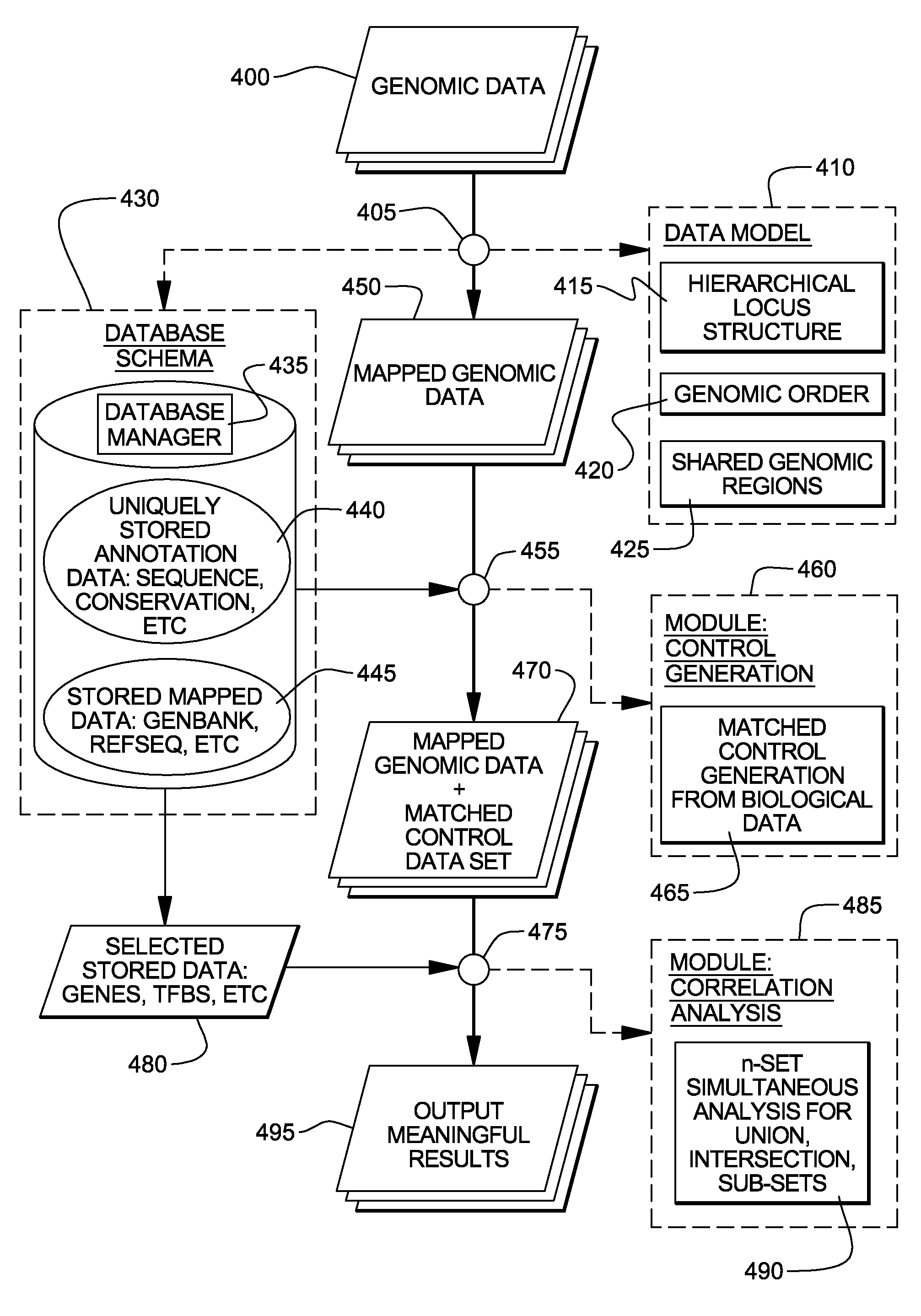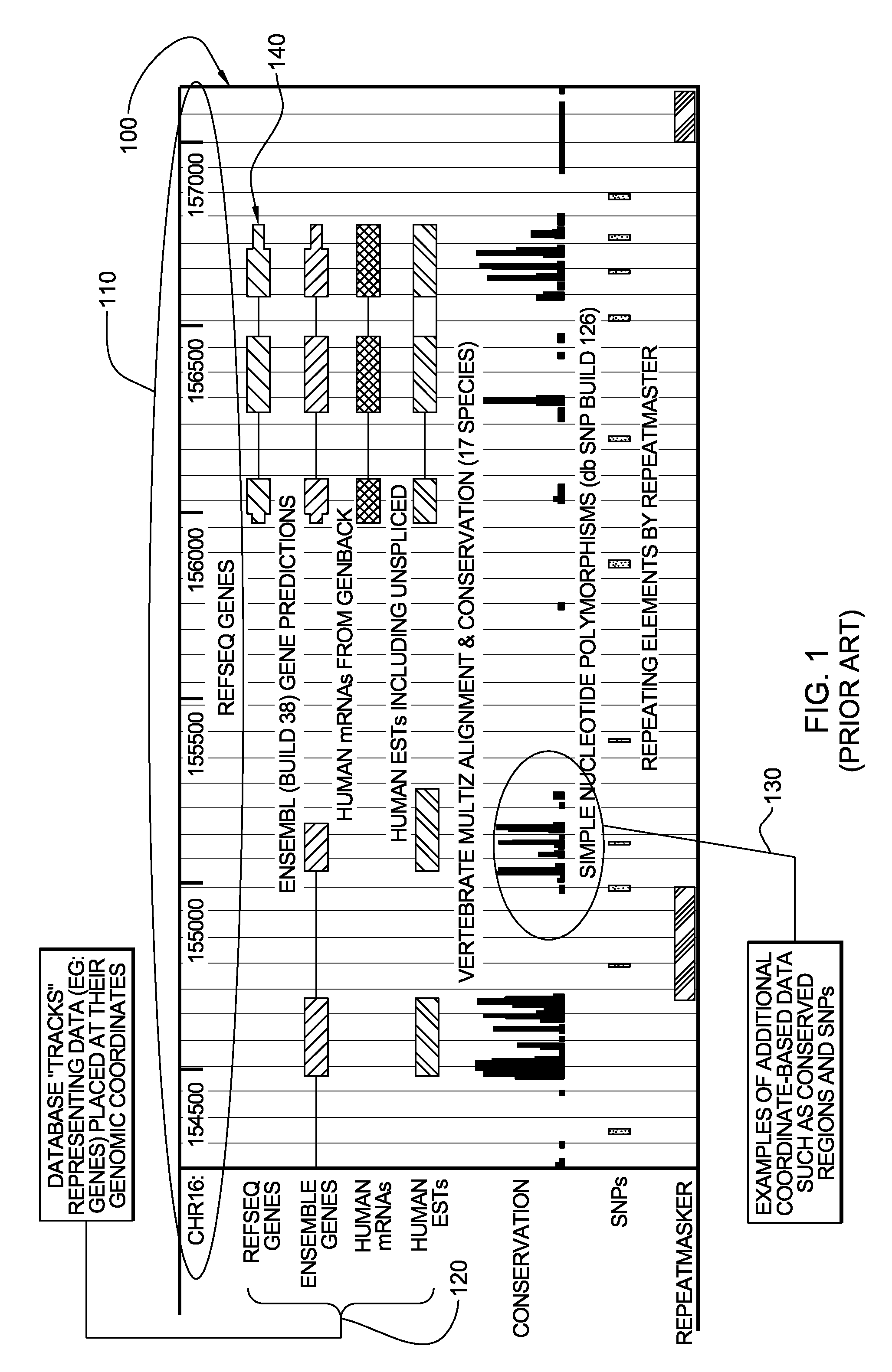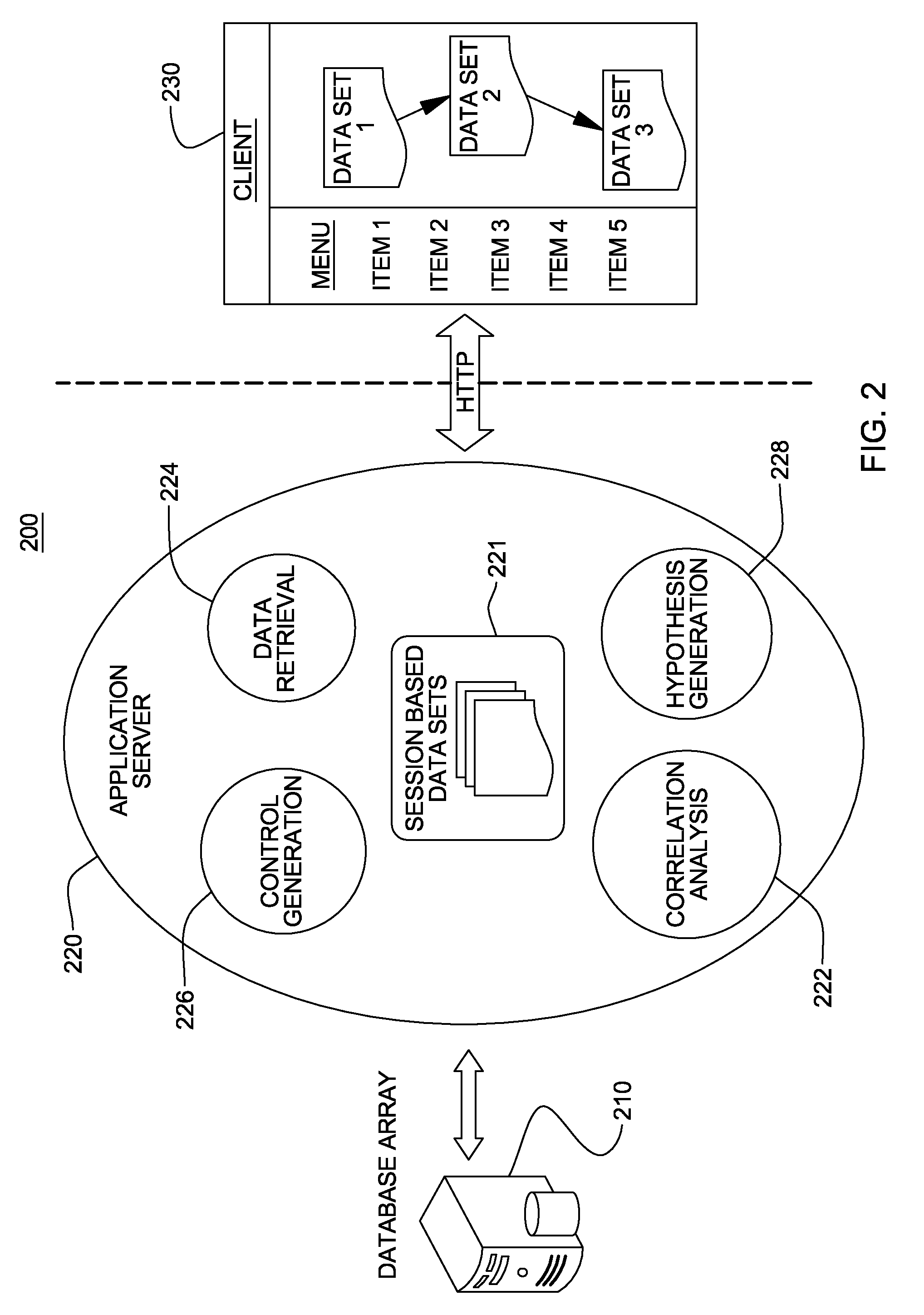Segmented storage and retrieval of nucleotide sequence information
- Summary
- Abstract
- Description
- Claims
- Application Information
AI Technical Summary
Benefits of technology
Problems solved by technology
Method used
Image
Examples
Embodiment Construction
[0046]By way of example, FIG. 1 represents a UCSC genomic browser display, generally denoted 100, illustrating a portion of the human genome with multiple existing data sets 120, 130 superimposed thereon. In the UCSC genomic browser, chromosomes are displayed in linear fashion from left to right, with coordinate markers 110 appearing across the top as illustrated. In this example, nucleotide positions 154000-157000 are illustrated for chromosome 16. Data sets 120, such as genes, are shown in a similar manner, with each item displayed at its appropriate coordinates. Multiple data sets are shown simultaneously by stacking the data sets 120, 130 from top to bottom. The view can be scaled to various levels of “zoom”, but in order to view relevance, one must scale the view to an extremely small portion of the total chromosome. Thus, only a minute portion of the data can be visually analyzed at any one time using the UCSC genomic browser. In the example illustrated, ReqSeq Genes, Ensemble...
PUM
 Login to View More
Login to View More Abstract
Description
Claims
Application Information
 Login to View More
Login to View More - R&D
- Intellectual Property
- Life Sciences
- Materials
- Tech Scout
- Unparalleled Data Quality
- Higher Quality Content
- 60% Fewer Hallucinations
Browse by: Latest US Patents, China's latest patents, Technical Efficacy Thesaurus, Application Domain, Technology Topic, Popular Technical Reports.
© 2025 PatSnap. All rights reserved.Legal|Privacy policy|Modern Slavery Act Transparency Statement|Sitemap|About US| Contact US: help@patsnap.com



